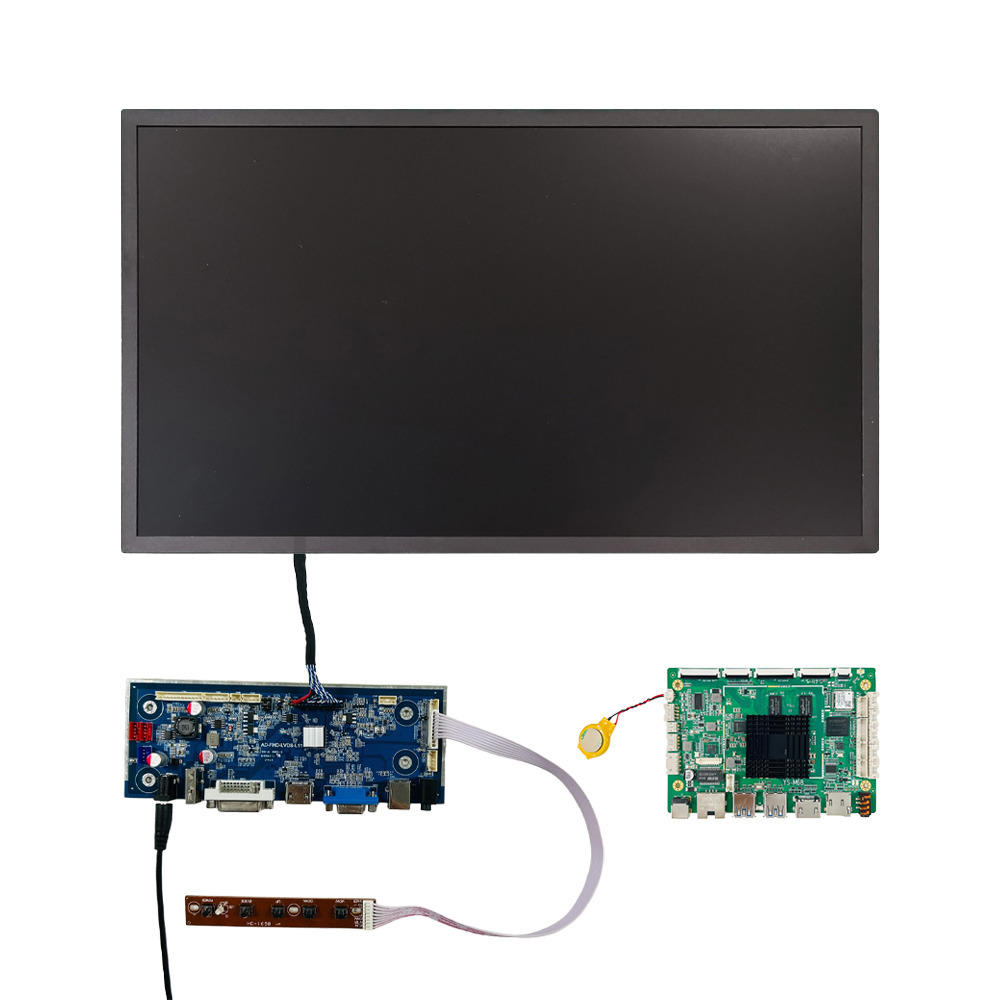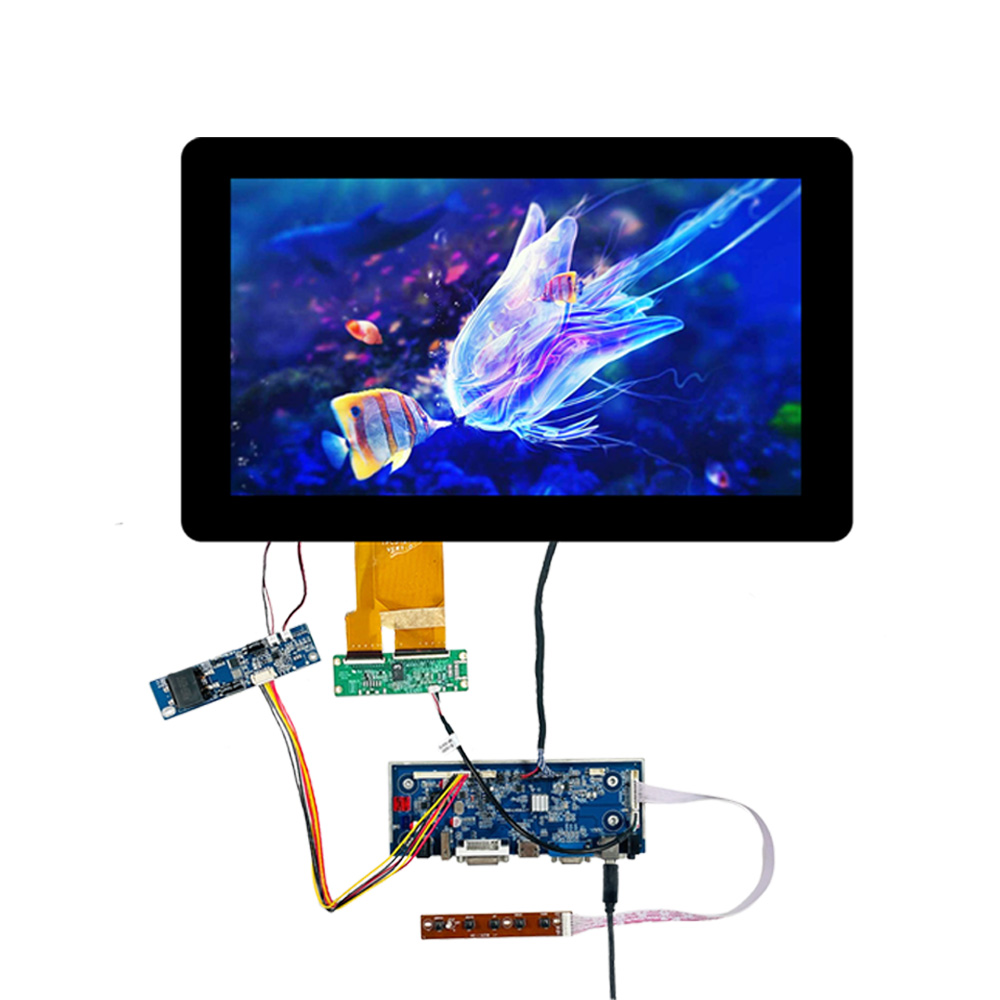Introduction
In recent years, the commercial display sector has been undergoing a significant transformation. What once might have been static signage or printed posters is now increasingly replaced by dynamic digital screens — from in‑store display panels and retail video walls, to interactive kiosks and out-of-home advertising. This trend is not only reshaping how brands engage audiences, but also opening new opportunities for companies that produce the underlying display hardware, including LCD modules.
For a module supplier based in Shenzhen, serving European and U.S. markets, understanding these shifts is critical. The demand for commercial displays is rising, and with it the demand for specialist modules that support higher brightness, rugged reliability, and varying sizes and form factors. This article explores the market trends, key driving forces, application scenarios, and what module suppliers should keep in mind.
Market Growth & Size
Several recent market studies highlight that the digital signage and commercial display market is expanding at a healthy pace. A report by Grand View Research estimates the global digital signage market was around USD 28.83 billion in 2024 and is projected to reach USD 45.94 billion by 2030, implying a compound annual growth rate of about 8.1%. Another source suggests that hardware, including display screens and modules, continues to dominate revenue share in many regions. In the U.S. market, hardware captured about 64.8% of the digital signage market share in 2024.
These figures demonstrate that commercial display is more than a niche: it is a sizable and growing sector. For LCD module suppliers, this means that beyond traditional consumer electronics, there is meaningful demand in the commercial and industrial channel for displays and modules — especially when tailored to application requirements rather than generic consumer-spec parts.
Key Drivers of Demand
Retailers continue investing in digital signage to enhance in-store experience, advertise dynamically, provide directional wayfinding, or integrate with omni-channel strategies. In the U.S., the retail segment accounted for roughly 28.6% of digital signage market size in 2024. Out-of-home advertising and digital billboards are evolving rapidly, with cities and transportation hubs deploying interactive or large-format digital screens. The growth of smart cities and digital infrastructure is a related driver.
The demand for higher resolution, higher brightness, and more custom form factors is pushing module suppliers to offer more specialized solutions. Reports indicate that the global digital signage market is being driven by advanced displays such as 4K/8K, flexible panels, and system-on-chip displays. For LCD module makers, this means that off-the-shelf modules may no longer suffice; customization, ruggedization, and support for ancillary features such as wide temperature range or various interface options are increasingly important.
North America remains a strong market for commercial displays, with the U.S. digital signage market expected to grow steadily in the coming years. Meanwhile, Asia-Pacific is often referenced as the fastest-growing region due to rapid infrastructure development, urbanization, and retail expansion. Suppliers exporting modules to Europe and the U.S. should stay aware of regional supply-chain expectations, such as shorter lead times, certifications, and local service requirements.
Beyond retail, other applications are gaining momentum: transportation hubs, healthcare facilities, corporate communications, hospitality, and industrial terminals. These applications emphasize the need for reliable, long-lifetime displays suitable for continuous operation.
Why LCD Modules Still Matter
Even as OLED and MicroLED technologies advance, LCD modules remain a viable choice for many commercial display applications. LCDs are cost-effective, mature, and widely available. They offer reliability and proven supply chains that integrators and designers trust. Diverse form factors, touch integration, wide temperature operation, and ruggedized versions make them highly adaptable to various commercial scenarios. Industrial and commercial environments often demand long operating hours and consistent performance, areas where LCD modules have a strong track record.
For module suppliers targeting commercial and industrial display sectors, emphasizing modules that meet commercial-grade demands is important. This includes high brightness, wide viewing angles, long lifetimes, and durability under continuous operation.
Application Scenarios
In-store retail displays and video walls are increasingly used to engage customers, provide product information, and deliver dynamic messaging. Modules with wide viewing angles, high brightness, and modular layout flexibility are particularly attractive.
Transportation hubs and smart city infrastructure employ large display installations for travellers and commuters. These environments require outdoor or semi-outdoor specification, wide operating temperature ranges, high brightness, and robust connectivity.
Corporate workspaces use digital signage for internal communications, branding, visitor information, and meeting room integration. Modules in these settings need to integrate with control systems, support long lifetimes, and offer reliable availability.
Healthcare and hospitality sectors deploy digital signage in waiting rooms, patient rooms, hotel lobbies, and restaurants. Displays in these spaces require thin bezels, uniform backlighting, low glare, and reliability. Modules with flexible sizes, touch integration, and customization capabilities are well-suited.
Industrial and OEM embedded displays, such as machine-control panels or kiosk screens, also benefit from reliable LCD modules. The growth in digital signage indirectly increases demand for embedded displays that rely on LCD modules.
Considerations for Module Suppliers
Customization and flexibility are key. Modules should offer options for brightness levels, interface types, mounting and connectors, durability, and lifespan. Supply-chain responsiveness, predictable lifecycles, and local support are increasingly important for integrators and end-users. Emphasizing long-term availability, support, and operational reliability helps differentiate suppliers in the market.
Collaboration with ecosystem partners, such as backlight suppliers and system integrators, can create additional value. Understanding end-user applications helps tailor module specifications for optimal performance.
While LCD technology remains relevant, suppliers should stay informed about emerging alternatives like OLED and MicroLED, and evolving customer expectations such as higher resolution, interactivity, and IoT integration. Being prepared to adapt while leveraging existing LCD strengths is a prudent strategy.
Outlook & Key Takeaways
The commercial display market is evolving along multiple dimensions: spending growth, application diversity, and demand for higher performance and flexible form factors. Market trends indicate expansion, with hardware components still dominating revenue. Applications are shifting beyond retail into infrastructure, transportation, healthcare, and hospitality. Customization, reliability, supply-chain responsiveness, and support are becoming differentiators.
LCD modules remain highly relevant for cost-conscious, reliability-focused commercial and industrial applications. Module suppliers can position their offerings to address these markets and highlight application examples where LCD modules are already successfully deployed.
Closing
As the digital signage and commercial display ecosystem expands, it creates opportunities throughout the supply chain, including content management, system integration, and hardware components. Module suppliers that understand customer demands, align with integrators, and offer reliable, customized solutions are well-positioned in this growing market. LCD module manufacturers continue to play a central role in supporting the digital signage revolution.
As the digital signage and commercial display ecosystem expands, it creates opportunities throughout the supply chain, including content management, system integration, and hardware components. Module suppliers that understand customer demands, align with integrators, and offer reliable, customized solutions are well-positioned in this growing market. LCD module manufacturers continue to play a central role in supporting the digital signage revolution.
If you are exploring high-performance LCD modules for commercial or industrial applications, our team at Duobond Display is ready to provide technical guidance and product solutions tailored to your project needs. Contact us today to discuss how our LCD modules can help you bring your display applications to life.
 2025-11-11105 Inch 5K CTP Touch All-in-One Machine for Indoor Digital Signage
2025-11-11105 Inch 5K CTP Touch All-in-One Machine for Indoor Digital Signage 2025-11-04Commercial Display Market Trends and the Growing Demand for LCD Modules
2025-11-04Commercial Display Market Trends and the Growing Demand for LCD Modules 2025-10-2928.6″ Bar LCD Display – Industrial Commercial Signage
2025-10-2928.6″ Bar LCD Display – Industrial Commercial Signage 2025-10-1518.5 Inch Wide Temperature Outdoor LCD Display — Tailored Display Solutions for Outdoor Advertising
2025-10-1518.5 Inch Wide Temperature Outdoor LCD Display — Tailored Display Solutions for Outdoor Advertising 2025-10-1523.1 Inch Bar LCD Display for Supermarket Shelf Solutions
2025-10-1523.1 Inch Bar LCD Display for Supermarket Shelf Solutions

-
Inquire
- Top


